This Playful by Design Tool has been created by the Digital Futures Commission to support designers improve children’s opportunities for free play in a digital world, and to tackle the challenges in developing digital products and services that respect children’s rights.
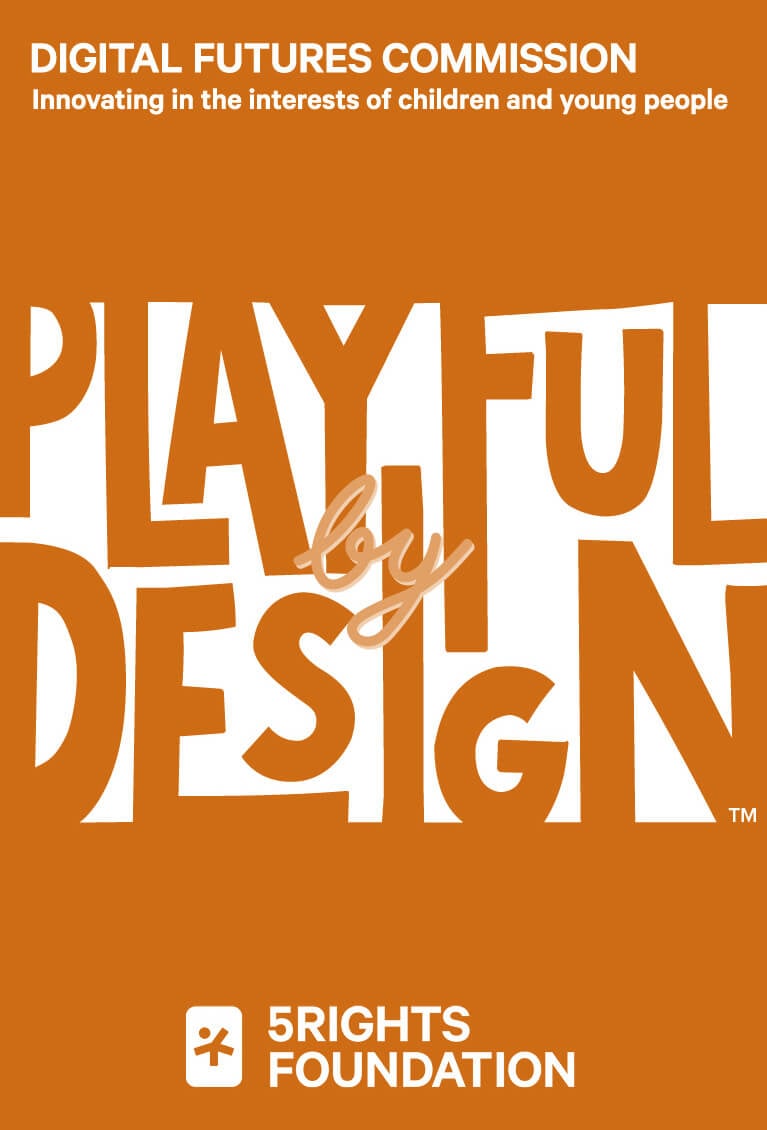
What's on offer?
The Playful by Design Tool includes a range of resources to provoke reflection, discussion and fresh ideas. It is freely available for anyone involved in creating digital products used by children. It can be used by product developers and designers, whatever their experience or responsibilities, working in group settings or individually. It can be used at any stage of the design process and includes three components: principle cards, prompt cards and playboards.
Principle cards set out design considerations to embed children’s rights into digital products and services. Use these in your design and development process to meet your objectives.
Prompt cards present questions to guide your design thinking. They will help you to focus your attention on player experiences, consider design alternatives and translate your ideas into actions.
Playboards support you to use the cards in flexible ways, whether with your design team or by yourself.
Free resources. Try the Playful by Design Tool today!
Post
Request a free pack of cards from the Digital Futures Commission.
Online tool
Clone the Playful by Design Miro board.
Print at home
Print the PDF download to create your own Playful by Design pack of cards and A4 Playboards.
Pro printing
Access all the assets and instructions you need to get your own packs of Playful by Design cards professionally printed.
Image files
Download the image files so you can integrate them into your own digital tools.
Examples
Check out examples of Playful by Design games on the Family Gaming Database.
Getting started
Once you have your Playful by Design cards, choose one of the five playboards to start using the Playful by Design Tool. Watch the animated guides (by clicking the images below) or download the playboards to get started.

Aim: Identify which Playful by Design principles relate to your current design challenges to inspire design thinking.
Designing a product or service aligned with children’s rights can be a complex process. The issues that arise are often knotty and require careful consideration. How do the challenges you face map onto the Playful by Design principles?
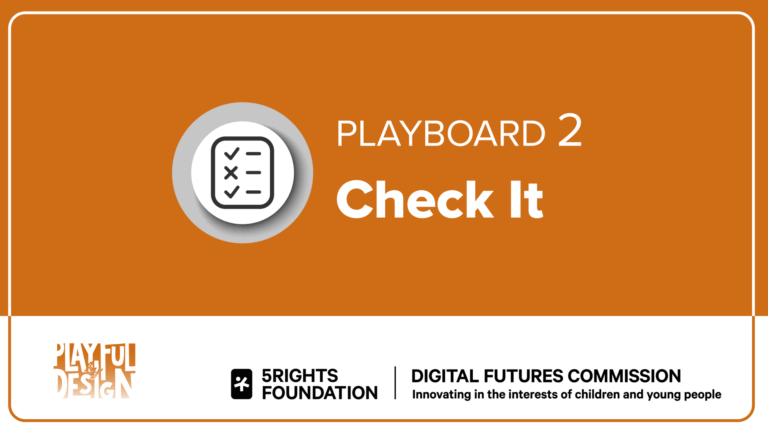
Aim: Identify which design principles are already embedded into your product design and which need more attention.
You might think you’ve got everything sorted, and that you’ve already embedded ethical and child rights-respecting principles into your design. But let’s see if some Playful by Design principles could be developed further to improve a child’s experience of your product.
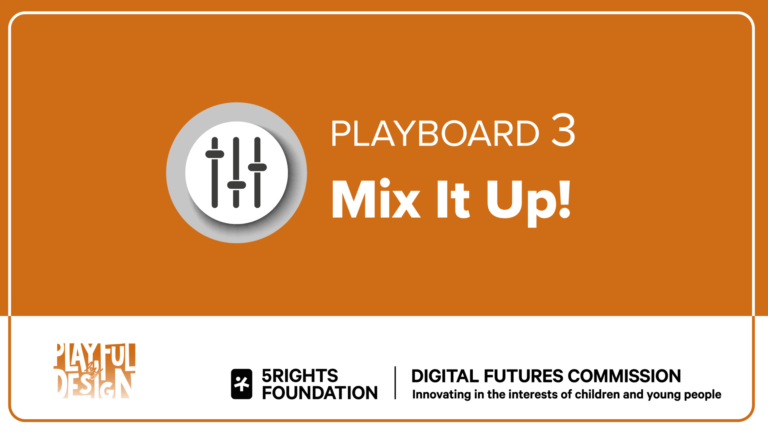
Aim: Identify which Playful by Design principles are in focus for you at this moment in time, and reflect on your current priorities.
Although all the Playful by Design principles are important, some might be at the forefront of your mind at the moment. This may be for many reasons. But still, you could ask yourself: is it time to shift your focus?
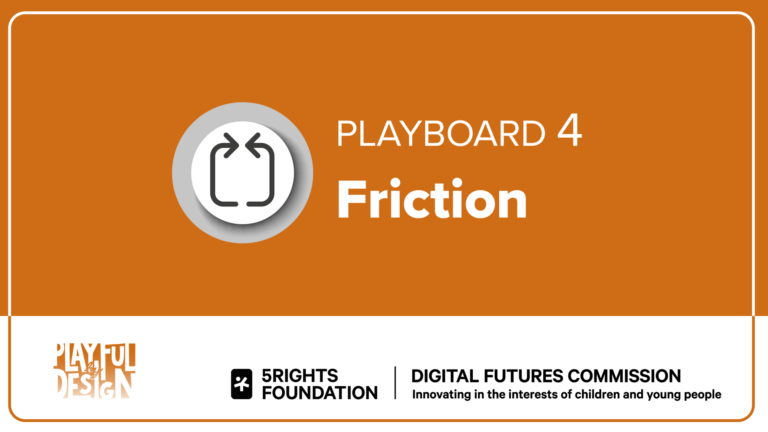
Aim: Articulate a challenging question that can refresh your design aims.
It’s not always easy to achieve designs that respect children’s rights. You will have many competing priorities and aims, and while some Playful by Design principles may align with your product and processes, you may experience friction and challenges. What tensions arise when you try to embed multiple Playful by Design principles into your product development?
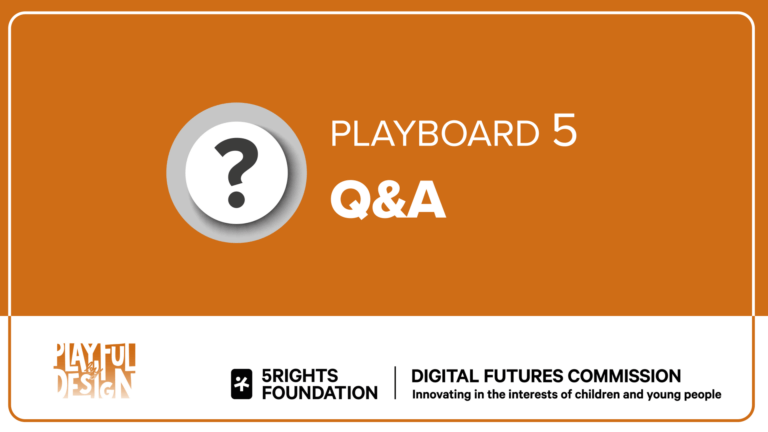
Aim: Get the conversation going and generate debate. Remember, the best questions and answers often lead to more questions!
Throughout the design process we ask ourselves and our teams lots of questions to improve our products – Why? What if? How? Still, it can be useful for someone outside our context to challenge us to reflect on children’s experiences, consider new approaches or identify the next steps. How might this Q&A session help you to improve your product?
Feedback
If you have used the Playful by Design Tool, please give us feedback here. It will take a maximum of 5 minutes to complete. Thank you so much for your support!